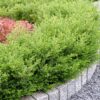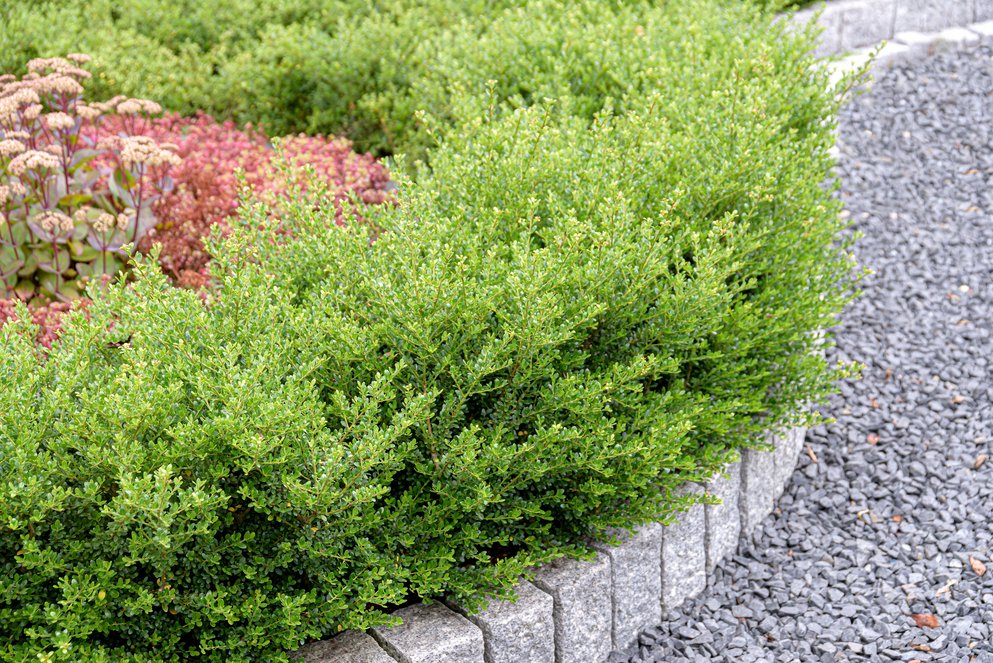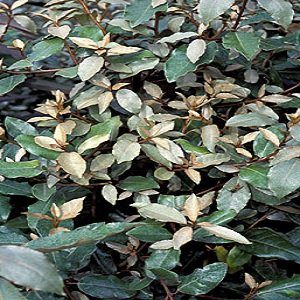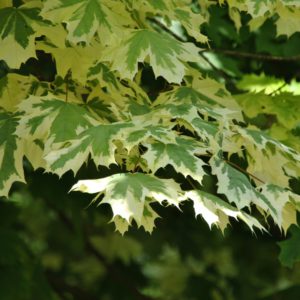Ilex crenata
€3.00
Frequently Bought Together


Description
Quick Facts
Common Name: Japanese Holly, Box-leaved Holly
Botanical Name: Ilex crenata
Plant Type: Evergreen hedging shrub
Mature Height: 1.5–4m (can be maintained at any height with pruning)
Mature Spread: 1–2m
Growth Rate: Slow to moderate (15–30cm per year)
Foliage: Small, glossy, dark green leaves with crenate (scalloped) edges
Flowering Period: Late spring (inconspicuous white flowers)
Hardiness: Fully hardy ( RHS H5)
Preferred Soil: Moist, well-drained, acidic to neutral soil
Sunlight Requirements: Full sun to partial shade
Spacing for Hedging: 30–40cm apart (3 plants per metre)
Best Uses: Formal hedging, low borders, topiary, box replacement
Special Features: Excellent box blight-resistant alternative, dense growth habit, tolerates clipping
Description
When the garden calls for structure, elegance, and year-round presence, Ilex crenata answers with quiet confidence. This is the hedging plant that has captured the hearts of gardeners seeking the refined beauty of box without the worry of blight—a steadfast companion that brings order and grace to Irish gardens in every season.
With its small, glossy leaves and dense, compact growth, Japanese Holly creates the kind of formal hedging that frames a garden beautifully, defining spaces with architectural precision. Unlike its prickly holly cousins, Ilex crenata bears soft, rounded foliage that resembles box so closely you might mistake it at first glance—yet it carries none of box’s vulnerabilities. It’s the hedge that stands strong through Irish winters, emerges fresh each spring, and asks for little more than an occasional trim to maintain its impeccable form.
Whether you’re creating a low border to edge a pathway, a taller hedge to enclose a secret garden room, or sculpted topiary spheres to punctuate a formal design, Ilex crenata adapts with remarkable versatility. It tolerates our Irish climate beautifully—thriving in both sun and partial shade, weathering coastal winds, and remaining evergreen through the coldest months. This is hedging that doesn’t just survive; it flourishes, bringing a sense of permanence and polish to any garden it calls home.
Plant it along driveways for a welcoming entrance, use it to create garden rooms that invite exploration, or let it frame your borders with timeless elegance. Ilex crenata is the hedging plant for those who value structure without stiffness, formality without fuss, and beauty that endures through every season.
Caragh Garden Notebook
Planting Your Ilex crenata Hedge
When to Plant: Plant container-grown Ilex crenata any time of year, though autumn and spring offer ideal conditions. Avoid planting during frozen ground or drought.
Site Selection: Choose a location in full sun to partial shade. Ilex crenata tolerates shade better than many hedging plants but produces denser growth in brighter positions. It prefers moist, well-drained soil that’s slightly acidic to neutral (pH 5.5–7.0).
Soil Preparation: Dig a trench 40–50cm wide and 30–40cm deep along your hedge line. Incorporate organic matter such as well-rotted compost or ericaceous compost to improve drainage and acidity. If your soil is heavy clay, add horticultural grit to prevent waterlogging.
Spacing: For a dense hedge, plant 30–40cm apart (approximately 3 plants per metre). For a lower border or edging, 25–30cm spacing creates a fuller effect more quickly.
Planting Method: Remove plants from containers and gently tease out any circling roots. Place plants in the trench at the same depth they were growing in their pots. Backfill with your improved soil mixture, firming gently as you go. Water thoroughly after planting.
Care & Maintenance
Watering: Water regularly during the first growing season to establish a deep root system. Once established, Ilex crenata is relatively drought-tolerant but performs best with consistent moisture, especially during dry spells. Water deeply rather than frequently to encourage strong root development.
Feeding: Apply a balanced slow-release fertiliser in early spring. An ericaceous feed in late spring supports healthy growth and maintains leaf colour. Avoid high-nitrogen fertilisers in late summer, as this encourages soft growth vulnerable to frost.
Mulching: Apply a 5–7cm layer of organic mulch (bark chips, leaf mould, or well-rotted compost) around the base of your hedge in spring. This conserves moisture, suppresses weeds, and gradually improves soil structure. Keep mulch clear of stems to prevent rot.
Pruning: Trim Ilex crenata twice a year for formal hedging—once in late spring after the main growth flush, and again in late summer. For a more relaxed hedge, one annual trim in late spring suffices. Use sharp hedge shears or trimmers for clean cuts. Always trim to a slightly tapered shape (wider at the base) to ensure light reaches lower branches.
Formative Pruning: In the first two years, trim lightly to encourage bushy growth and density. Avoid cutting back too hard initially—allow plants to establish before creating your desired shape.
Seasonal Care
Spring: Apply fertiliser and refresh mulch. Watch for new growth and plan your first trim for late spring once the main growth flush has finished.
Summer: Water during dry periods, especially newly planted hedges. Complete your second trim in late summer to maintain shape through autumn and winter.
Autumn: Clear fallen leaves from the base of the hedge to prevent fungal issues. This is an excellent planting season for new hedges.
Winter: Your Ilex crenata hedge remains evergreen and structural through winter, requiring no special care. Avoid heavy snow accumulation on formal shapes by gently brushing off excess weight.
Troubleshooting
Yellowing Leaves: Often indicates poor drainage or alkaline soil. Improve drainage with organic matter and grit, and apply ericaceous fertiliser to lower pH.
Sparse Growth: Usually caused by insufficient light or poor soil. Ensure adequate sunlight reaches all parts of the hedge and improve soil with compost and appropriate feeding.
Leaf Drop: Some leaf drop in spring as new growth emerges is normal. Excessive leaf drop may indicate waterlogging or root disturbance.
Design Suggestions
Formal Gardens: Create crisp, architectural hedging at 60–100cm height for parterres, knot gardens, or formal borders. Pair with gravel paths and topiary for classic elegance.
Garden Rooms: Use taller hedges (1.5–2m) to divide your garden into intimate spaces. The dense growth provides excellent screening and structure year-round.
Low Edging: Maintain at 30–40cm height to edge pathways, borders, or vegetable gardens. This creates definition without overwhelming plantings.
Topiary: Shape into balls, cones, or spirals for focal points. Ilex crenata’s dense growth and small leaves make it ideal for detailed topiary work.
Companion Planting
Ilex crenata’s dark evergreen foliage provides the perfect backdrop for colourful perennials and seasonal interest. Consider pairing with:
- Spring bulbs: Narcissus, tulips, and alliums emerging through the base
- Herbaceous perennials: Lavender, nepeta, or geraniums softening formal lines
- Roses: The structured hedge frames romantic rose plantings beautifully
- Grasses: Stipa, calamagrostis, or miscanthus for textural contrast
- Shade lovers: Hostas, ferns, and hellebores if your hedge is in partial shade
Additional information
| Pot Size |
|---|






